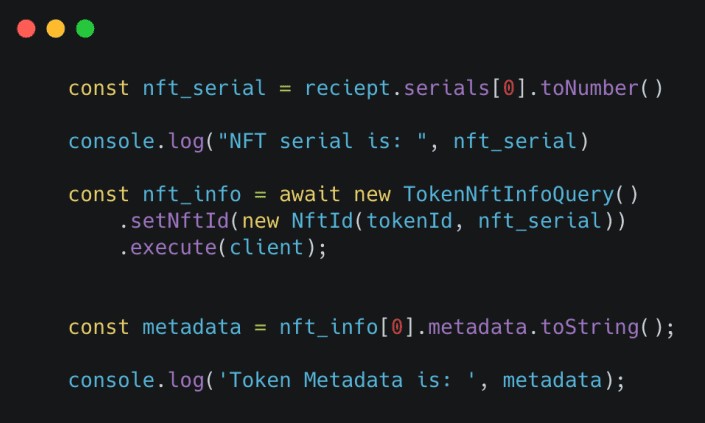With the help of JavaScript, you will learn how to create and mint NFTs on the hashgraph network and how to query their data.
NFTs – what are they?
Before we go any further, let’s review what a NFT is. Non-fungible tokens are called NFTs. “Fungible” means it is a replacement that is interchangeable or replaceable with the same item. Non-fungible tokens cannot be replaced. Unreplaceable digital assets must be unique. Our tokens are unique and irreplaceable, so they have no counterparts! Authentication of information using these tokens is one of the uses for these tokens. For now, NFTs are mainly used for digital art and collectibles, but they are able to be used for so many other things as well. As an example, NFTs could be used to protect deeds to houses, certificates of authenticity, education degrees, identity cards, and other vital information.

Do you know how to make one?
The learning curve of these new technologies can be challenging for developers who are new to web3 and blockchain, for instance learning to program using Solidity. Hedera offers simple capabilities for minting NFTs using popular programming languages like JavaScript. Hedera’s Token Service (HTS) is used when making an NFT on the Hedera Network. This service has three SDKs that can be used: Golang, Java, and JavaScript. A variety of community-developed SDKs are also available.
Selecting the environment
Any environment tool you prefer may be used. For a quick setup with Node, follow this short guide (3min).
1. Check the code
After configurating the account ID, password, and private keys. A code that looks like this should be used.

2. Establishing the NFT
Several Hedera SDK components are required to create the NFT, so make sure to include them in the require statement in your file. TokenCreateTransaction, PrivateKey, TokenType, and TokenSupplyType can also be imported from the SDK. By passing the appropriate configuration for your token in the TokenCreateTransaction method, you can create your token. Below is an example that you can use as a reference.

With this token, we create 10 tokens. In order to set unique metadata for each NFT, the initial collection must be zero. To avoid fractional NFTs, make sure your decimals are zero. This key determines who is allowed to mint the NFTs corresponding to the supply key. In the next section, we’ll discuss minting.
3. Minting
NFTs are easy to mint. Make sure you include the TokenMintTransaction from the Hedera SDK at the top of your file when importing it. Below is a sample syntax.

Metadata storage solutions come in many forms. Here’s a more detailed description of the possible uses. Developers, on the other hand, are accustomed to using InterPlanetary File System (IPFS) for ease of use.
4. Information about the NFT
The metadata for your NFT should now be available over the network after it is minted. Hedera SDK provides TokenNftInfoQuery and NftId for performing this type of query.

Using this query, you can retrieve the metadata associated with each minted NFT.




